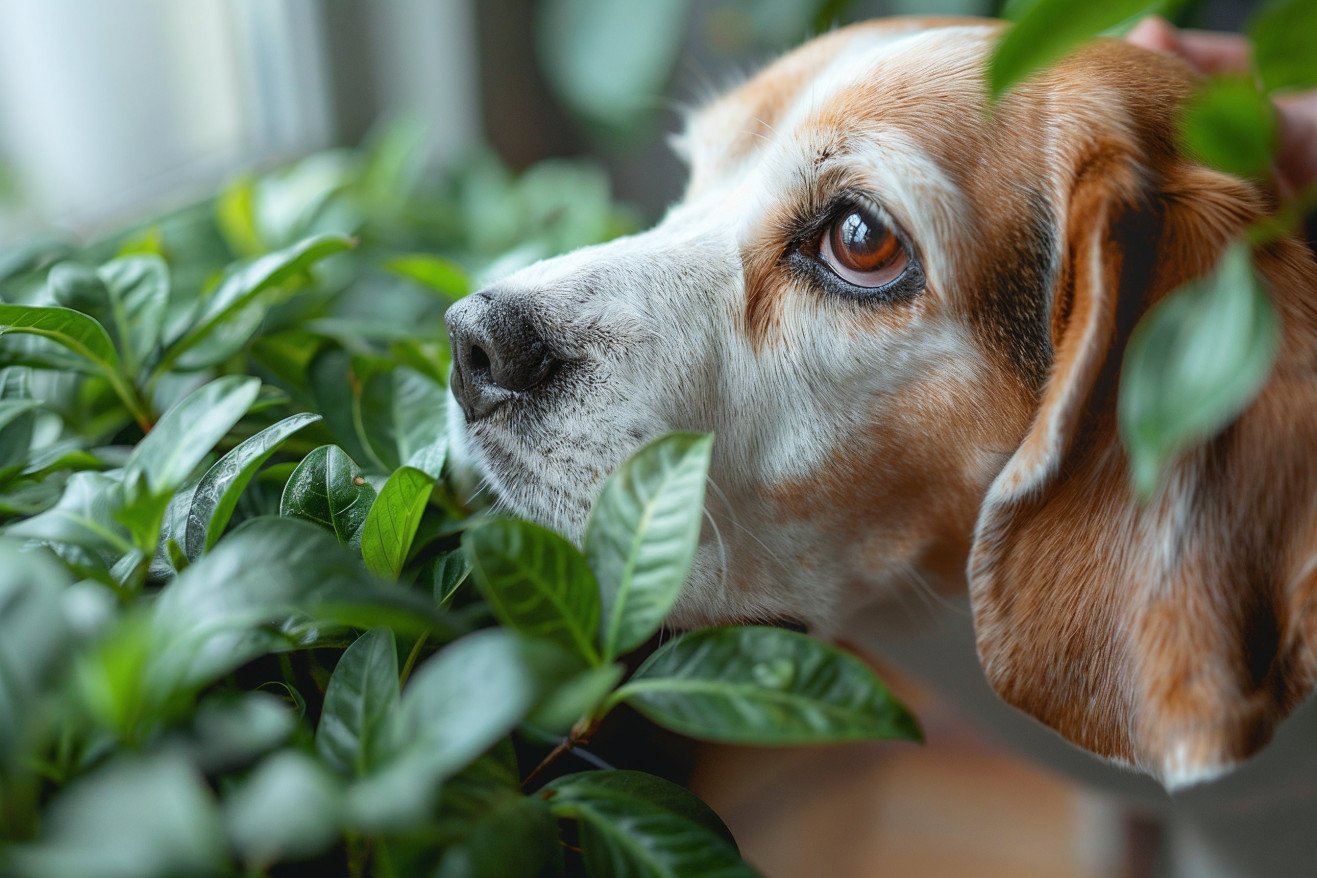Can Dogs Eat Money Trees? What Pet Owners Should Know
20 May 2024 • Updated 18 May 2024

If your dog has taken a bite out of your money tree, you may be wondering if this popular houseplant is toxic to your pet. According to the ASPCA, money trees (Pachira aquatica) are non-toxic to dogs. Although eating any plant in large amounts can lead to an upset stomach, money trees do not contain any toxic principles that would be harmful to dogs.
In this article, we'll take a look at what expert horticulturists and veterinarians have to say about the potential dangers of dogs eating money trees. Their studies have shed light on which parts of the plant can be harmful when ingested in large quantities and how to best care for your pet-friendly houseplants. By learning about plant toxicity from a scientific perspective, you can make the best choices for your dog and your home's indoor plants.
Are money trees toxic to dogs?
Symptoms of a Dog Eating a Money Tree
Although money trees are non-toxic to dogs according to the ASPCA, eating large amounts of the plant can lead to mild gastrointestinal upset. If your dog has eaten some of your money tree, watch for signs of lethargy, weakness, vomiting, diarrhea, excessive drooling, and nausea, as listed by Greg.app.
Most dogs will make a full recovery with treatment and care from a vet. This could include a temporary diet of boiled chicken and rice, probiotics to help with gut health, and anti-nausea medication. However, more serious cases of plant ingestion may have a less positive outcome, so make sure to see a vet if your dog's symptoms don't improve, as recommended by professionals.
Can Dogs Eat Money Tree Leaves?
Money tree plant leaves are safe for dogs to eat, according to The Zen Succulent. This is one of the reasons money trees are often recommended as pet-friendly, low-maintenance indoor plants for dog owners.
That said, you should still try to keep your dog from eating too much of any plant, including money tree leaves, according to MDC Exports. In addition, some plants with common names like 'jade plant' or 'rubber plant' are toxic to pets, so make sure you know exactly what kind of plant you have to avoid any mix-ups, according to Lively Root.
How to Keep Money Trees Away From Dogs
In order to keep your money tree plants safe from your furry friends, make sure to keep them in a place where your dog can't reach them, like on a high shelf or in a hanging planter, according to Lively Root. While a small amount of the plant is not toxic to dogs, large amounts can still lead to an upset stomach. Make sure to watch your dogs around the plant and clean up any fallen leaves or other plant material immediately.
House Beautiful also recommends putting decorative rocks or moss on top of the soil to prevent dogs from digging and eating the plant. If you suspect your dog has eaten your money tree and they show signs of toxicity, contact your vet immediately.
How to Care for a Money Tree in a Pet-Friendly Home
In order to set up your home for success as a pet-friendly place for a money tree, you need to know how to care for the plant. Money trees need well-draining soil, moderate to high humidity, and bright, indirect sunlight to grow and thrive, per The Spruce. Water when the soil has dried out and fertilize once a month during the growing season, notes Apartment Therapy.
In addition, trimming and braiding the trunks will help the money tree maintain its distinctive look, says House Beautiful. Keep an eye out for common houseplant problems and pests and make sure your money tree isn’t suffering from overwatering, underwatering, or a lack of light, all of which could make your dog more interested in the plant. Finally, make sure you’re choosing the right size pot and repotting as necessary to ensure your money tree is healthy and to prevent any other issues.
With the right care and setup, you can help ensure that your dog won’t be interested in eating your money tree. However, it’s still important to monitor your dog closely and get them help right away if they do happen to eat any part of the plant.
What to Do If Your Dog Eats a Money Tree
While money trees are not toxic to dogs, consuming large amounts of the plant can cause mild gastrointestinal upset. If your dog has eaten part of a money tree, be on the lookout for signs of vomiting, diarrhea, lethargy, or difficulty swallowing. Call your vet right away, as early intervention is important, especially in more serious cases that can result in organ damage.
Never try to make your dog vomit or administer any at-home treatments unless directed by a professional. Depending on the severity of the case, your vet may suggest treatments that include activated charcoal, IV fluids, or other medications to help alleviate the symptoms. In most cases, dogs will make a full recovery after eating a money tree, but it's always best to prevent any issues by keeping these plants out of your pet's reach.
Final Thoughts: Money Trees and Your Dog's Safety
Money trees are non-toxic to dogs, but it's still important to be cautious to ensure your dog's safety. Make sure your dog doesn't chew on or consume any part of the plant in large quantities, as this could result in mild gastrointestinal upset. If your dog does eat a money tree, call your vet right away to get the proper treatment.
By being mindful of the plants you bring into your home and getting your dog the medical care they need if they eat something they shouldn't, you can enjoy the benefits of having a money tree in your home while keeping your dog safe and healthy.


